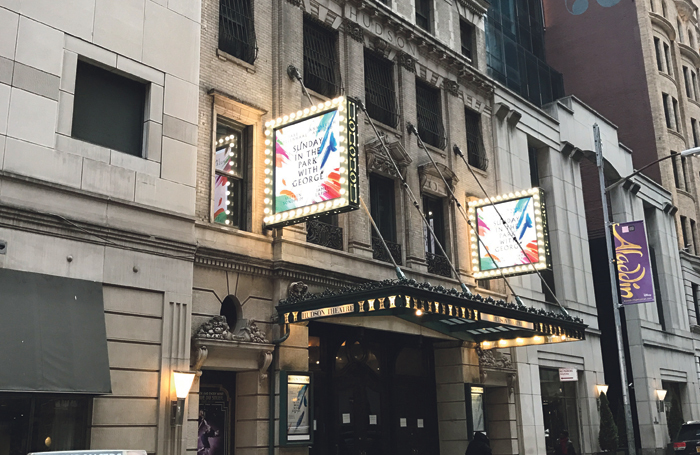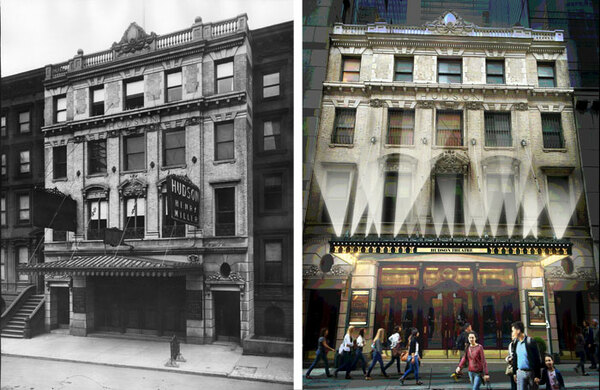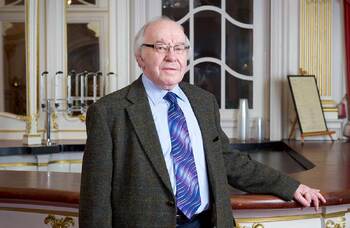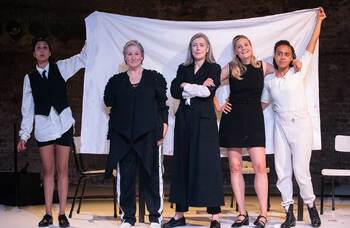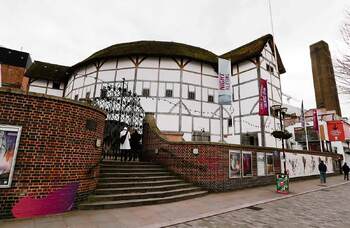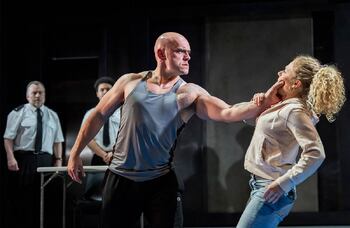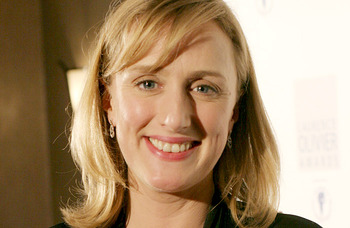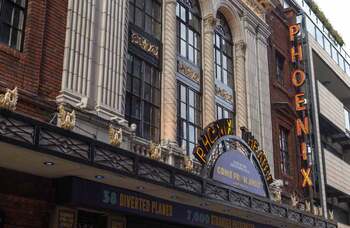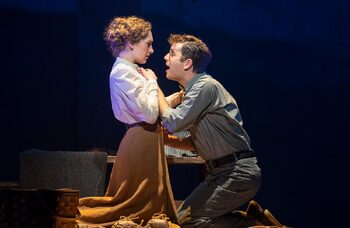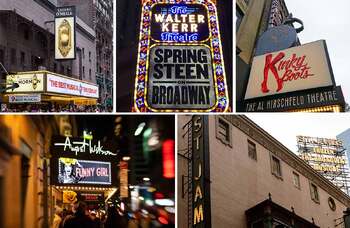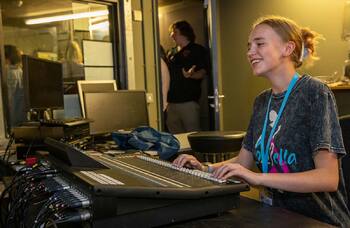How ATG revived New York’s abandoned Hudson Theatre
Broadway welcomes a new kid on the block this week – the Hudson Theatre. Well, not new exactly, since the building has been there for 114 years, but it hasn’t been a working theatre since the 1960s, so it is effectively new to a whole generation of theatregoers.
Just off Times Square, sandwiched between two hotels, the Hudson has been out of commission as a playhouse for so long, everyone had forgotten just what an unusual and exquisite space it is.
Its multimillion-dollar renovation and refurbishment at the hands of new leaseholders Ambassador Theatre Group, in partnership with the owner Millennium and Copthorne Hotels, has been a long time coming, and has involved a number of UK-based creatives.
Notable among these is Charcoalblue, the UK’s leading theatre consultancy with offices in London, Bristol, Melbourne and New York. One of its most recent projects was the groundbreaking restyling of the Lyric Hammersmith into a teaching theatre for the performing arts.

“Our job was to recreate the aura of the Hudson when it opened on day one, only brought right up to date with the most modern technical infrastructure,” explains Clemeth Abercrombie from Charcoalblue’s New York office, who worked side by side with ATG project manager Erich Jungwirth.
The Hudson is the UK-based ATG’s second Broadway acquisition, following its 2013 takeover of the Lyric Theatre, which is currently home to Cirque du Soleil’s first Broadway production, Paramour.
Unlike the cavernous Lyric, which seats 1,930, the Hudson is an intimate space for 970. The award-winning Essex-based company Kirwin and Simpson was drafted in to provide new seating throughout the auditorium. “We wanted people to come in and feel the comfort of the space,” says Jungwirth. “The seating and carpeting was one of the most important things for us.”
Despite its modest proportions, the Hudson actually appears to be one of Broadway’s more spacious playhouses when you arrive because of its unusually large foyer, or lobby as the Americans say. “The common experience with Broadway theatres is that one minute you’re on the sidewalk, and the next you’re in the auditorium,” says Jungwirth. “With the Hudson, there is almost 100ft of lobby space before you hit the auditorium, including the beautiful box office area with its emerald marble walls and Tiffany glass domes.
“Previously the gilt decoration in the lobby area had been painted over, so we’ve taken a proactive approach and restored the original colours and detail.”
Because the Hudson had been used in the past as a radio and TV recording theatre, a nightclub and, most recently, a conference centre, a lot of the exquisite architectural detail had been allowed to fall into disrepair, or simply painted over, and the stalls had been covered over by decking to allow for dancing and dining.

“There was a degree of apprehension at first about whether it would still work as a theatre,” says Abercrombie. “A lot of the equipment was more consistent with its former use as a studio and conference centre, and the dress circle was fitted out with cinema-style seating.
“But those concerns were quickly allayed on my first visit to the theatre, as it was evident the original structure was both solid and workable. The bones were all there. There was a grid and a grid loft that allowed us to come in and install a new flying system.
“On the technical side, we were trying to maximise and optimise loading capacity, installing a double purchase system in the narrow wing space, putting in as many stage lights as possible, repurposing the existing dressing rooms for technical infrastructure, automation and storage, and creating a new suite of eight dressing rooms in the basement underneath the orchestra pit.”
Front of house, on the dress circle level, a disused mechanical room has been converted into a new bar and Ambassadors lounge, with its own lift from the ground floor. The number of available toilets has been doubled from 14 to 28, accessible on all levels.
In the auditorium itself, the original hand-painted glass tiles that adorn the proscenium arch, as well as the dress circle and balcony fascias, look as good as new, and chime in with the gold fabric of the seating, and green, gold and bronze carpeting.
The reopening of the Hudson with a revival of Sondheim’s Sunday in the Park With George, starring Jake Gyllenhaal, marks the culmination of two years’ work for ATG.
“We have totally transformed it,” says Jungwirth. “The changes that had been made over the years didn’t measure up to the grandeur of the space. Now you look at the theatre and it feels whole again.”
The history of the Hudson

Now the oldest surviving playhouse on Broadway, the Hudson Theatre opened on October 19, 1903, with a production of the comedy Cousin Kate, starring Ethel Barrymore, dubbed “the first lady of the American theatre”.
It was built and run by a successful producer of the time, Henry B Harris, and his business partner George G Heye. A passenger aboard the Titanic in April 1912, Harris drowned after the liner ran into an iceberg during its maiden voyage.
The theatre’s unusually spacious 100ft-deep foyer distinguished it from other theatres of that era, along with a triumvirate of ornate Tiffany domes, hand-painted tiles fronting the proscenium, and the dress circle and balcony fascias.

An article in the New York Times, published at the time of its opening, also commented on the Hudson’s innovative use of concealed electric light in the auditorium, adding to the warmth and intimacy of the space.
After Harris perished in the Atlantic, his wife Renee, who survived the disaster, took over the running of the Hudson, making her the only female producer-manager in New York at that time. Her tenure did not survive the Great Depression and she was forced to sell the Hudson in 1932.
After a brief stint as a CBS radio studio in the 1930s, the Hudson returned to its theatrical origins until 1950 when it was bought by NBC, the TV network, and used to launch The Tonight Show, hosted by Steve Allen. Elvis Presley performed Hound Dog on The Tonight Show at the theatre in 1956. In its time, the Hudson was also a nightclub and disco, a blue movie theatre, a comedy club and a conference centre.
In its theatrical heyday, it was where George Bernard Shaw’s Man and Superman had its Broadway premiere in 1905, where Louis Armstrong got his big break in the 1929 revue Hot Chocolates, where Jason Robards starred in the premiere of Toys in the Attic by Lillian Hellman, and where Laurence Olivier played the title role in Jean Anouilh’s play Becket in 1961. Its final legitimate stage production in 1968 was called Mike Downstairs and ran for a miserable four performances.
For decades the Hudson was threatened with demolition, since nobody seemed to know what to do with it. There was a public outcry when one developer proposed replacing it with a car park. A spate of Broadway closures in 1982 prompted New York’s Landmarks Preservation Commission to step in and protect both the exterior and interior from major redevelopment.
Now, the extensive renovation and refurbishment completed by new leaseholders ATG in association with the owners Millennium and Copthorne Hotels have secured its future.
Opinion
Recommended for you
Opinion
Recommended for you
Most Read
Across The Stage this weekYour subscription helps ensure our journalism can continue
Invest in The Stage today with a subscription starting at just £7.99
